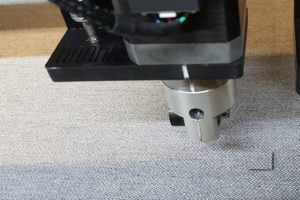 R-3 Solutions can help your commercial or medical facility meet green interior standards and earn LEED credit through material selection. Many of our reupholstery fabrics are certified with GreenGuard, which has established performance-based standards to define products and processes with low chemical and particle emissions for use indoors. The standards are primarily for building materials, finishes, interior furnishings, and furniture. The standards establish certification procedures including test methods, allowable emission levels, product sample collection and handling, testing type and frequency as well as program application processes, toxicity limits and acceptance.
R-3 Solutions can help your commercial or medical facility meet green interior standards and earn LEED credit through material selection. Many of our reupholstery fabrics are certified with GreenGuard, which has established performance-based standards to define products and processes with low chemical and particle emissions for use indoors. The standards are primarily for building materials, finishes, interior furnishings, and furniture. The standards establish certification procedures including test methods, allowable emission levels, product sample collection and handling, testing type and frequency as well as program application processes, toxicity limits and acceptance.
LEED credit is designated by the US Green Building Council, and can apply to indoor renovations, especially where R-3 Solutions is engaged in recycling the spent components. Reuse, materials with recycled content that meet GreenGuard standards, and localization of source all go toward acheivement of LEED credit. Read more from the US Green Building Council on Furniture and Medical Furnishing credit.
From the US Green Building Council on Furniture and Medical Furnishing:
Read More here: http://www.usgbc.org/credits/healthcare/v4-draft/mrcx-0
Intent
To enhance the environmental and human health performance attributes associated with freestanding furniture and medical furnishings.
Requirements
Use at least 30% (1 point) or 40% (2 points), by cost, of all freestanding furniture and medical furnishings (e.g., mattresses, foams, panel fabrics, cubicle curtains, window coverings, other textiles) that meet the criteria in one of the following three options.
Include built-in casework and built-in millwork in the base building calculations, even if manufactured off site. The dollar value of any individual product may be included in the total qualifying value if the product meets the criteria.
Option 1. minimal chemical content
All components that constitute at least 5%, by weight, of a furniture or medical furnishing assembly, including textiles, finishes, and dyes, must contain less than 100 parts per million (ppm) of at least four of the five following chemical groups:
- urea formaldehyde;
- heavy metals, including mercury, cadmium, lead, and antimony;
- hexavalent chromium in plated finishes consistent with the European Union Directive on the Restriction of the Use of Certain Hazardous Substances (EU RoHS);
- stain and nonstick treatments derived from perfluorinated compounds (PFCs), including perfluorooctanoic acid (PFOA); and
- added antimicrobial treatments.
AND/OR
Option 2. testing and modeling of chemical content
All components of a furniture or medical furnishing assembly, including textiles, finishes, and dyes, must contain less than 100 parts per million (ppm) of at least two of the five chemicals or materials listed in Option 1.
New furniture or medical furnishing assemblies must be in accordance with ANSI/BIFMA Standard Method M7.1–2011. Comply with ANSI/BIFMA e3-2010 Furniture Sustainability Standard, Sections 7.6.1 and 7.6.2, using either the concentration modeling approach or the emissions factor approach. Model the test results using the open plan, private office, or seating scenario in ANSI/BIFMA M7.1, as appropriate. USGBC-approved equivalent testing methodologies and contaminant thresholds are also acceptable. Documentation submitted for furniture must indicate the modeling scenarioused to determine compliance.
Salvaged and reused furniture more than one year old at the time of use is considered compliant, provided it meets the requirements for any site-applied paints, coatings, adhesives, and sealants.
AND/OR
Option 3. Multi-Attribute Assessment of Products
Use products that meet at least one of the criteria below. Each product can receive credit for each criterion met. The scope of any environmental product declaration (EPD) must be at least cradle to gate.
- Product-specific declaration.
- Products with a publicly available, critically reviewed life-cycle assessment conforming to ISO 14044 that have at least a cradle to gate scope are valued as one quarter (1/4) of a product for the purposes of credit achievement calculation.
- Environmental Product Declarations which conform to ISO 14025, 14040, 14044, and EN 15804 or ISO 21930 and have at least a cradle to gate scope.
- Industry-wide (generic) EPD — Products with third-party certification (Type III), including external verification, in which the manufacturer is explicitly recognized as a participant by the program operator are valued as one half (1/2) of a product for purposes of credit achievement calculation.
- Product-specific Type III EPD — Products with third-party certification (Type III), including external verification in which the manufacturer is explicitly recognized as the participant by the program operator are valued as one whole product for purposes of credit achievement calculation.
- Materials reuse. Use salvaged, refurbished, or reused products.
- Recycled content. Use products with recycled content. Recycled content is the sum of post-consumer recycled content plus one-half the pre-consumer recycled content.
- Extended producer responsibility. Products purchased from a manufacturer (producer) that participates in an extended producer responsibility program or is directly responsible for extended producer responsibility.
- Bio-based materials. Bio-based products must meet the Sustainable Agriculture Network’s Sustainable Agriculture Standard. Bio-based raw materials must be tested using ASTM Test Method D6866 and be legally harvested, as defined by the exporting and receiving country. Exclude hide products, such as leather and other animal skin material.
- Wood products. Wood products must be certified by the Forest Stewardship Council or USGBC-approved equivalent.
Products that meet the above criteria are valued according to source location (extraction, manufacture, and purchase point must be within the distances noted below):
For credit achievement calculation, products sourced (extracted, manufactured, purchased) within 100 miles (160 km) of the project site are valued at 200% of their base contributing cost.
